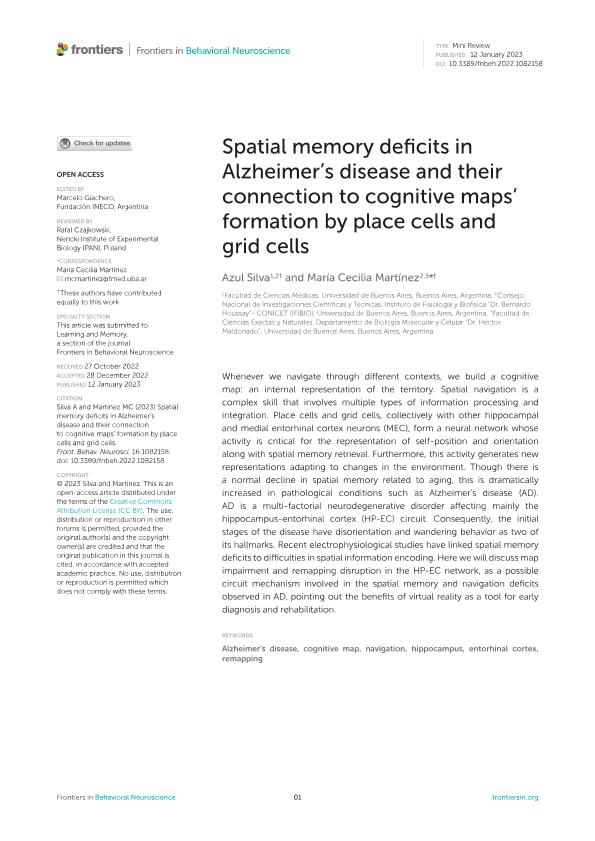Artículo
Spatial memory deficits in Alzheimer’s disease and their connection to cognitive maps’ formation by place cells and grid cells
Fecha de publicación:
01/2023
Editorial:
Frontiers Media
Revista:
Frontiers in Behavioral Neuroscience
ISSN:
1662-5153
Idioma:
Inglés
Tipo de recurso:
Artículo publicado
Clasificación temática:
Resumen
Whenever we navigate through different contexts, we build a cognitive map: an internal representation of the territory. Spatial navigation is a complex skill that involves multiple types of information processing and integration. Place cells and grid cells, collectively with other hippocampal and medial entorhinal cortex neurons (MEC), form a neural network whose activity is critical for the representation of self-position and orientation along with spatial memory retrieval. Furthermore, this activity generates new representations adapting to changes in the environment. Though there is a normal decline in spatial memory related to aging, this is dramatically increased in pathological conditions such as Alzheimer’s disease (AD). AD is a multi-factorial neurodegenerative disorder affecting mainly the hippocampus-entorhinal cortex (HP-EC) circuit. Consequently, the initial stages of the disease have disorientation and wandering behavior as two of its hallmarks. Recent electrophysiological studies have linked spatial memory deficits to difficulties in spatial information encoding. Here we will discuss map impairment and remapping disruption in the HP-EC network, as a possible circuit mechanism involved in the spatial memory and navigation deficits observed in AD, pointing out the benefits of virtual reality as a tool for early diagnosis and rehabilitation.
Archivos asociados
Licencia
Identificadores
Colecciones
Articulos(IFIBIO HOUSSAY)
Articulos de INSTITUTO DE FISIOLOGIA Y BIOFISICA BERNARDO HOUSSAY
Articulos de INSTITUTO DE FISIOLOGIA Y BIOFISICA BERNARDO HOUSSAY
Citación
Silva, Azul; Martínez, María Cecilia; Spatial memory deficits in Alzheimer’s disease and their connection to cognitive maps’ formation by place cells and grid cells; Frontiers Media; Frontiers in Behavioral Neuroscience; 16; 1-2023; 1-8
Compartir
Altmétricas




